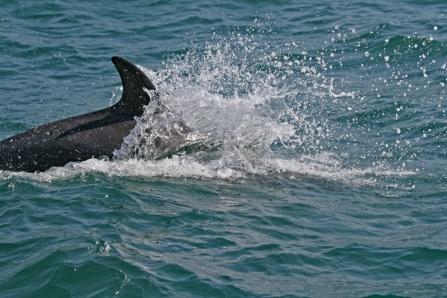No sooner had we stepped on board the Causeway lass when we spotted our first two marine mammals... two spaniels swimming way out into the middle of the bay, chasing gulls. International spaniel rescue sprang into action and the Causeway Lass shepherded two tired but happy spaniels back to their owners on the shore.
We then set off for the Skerries Islands, location of the first Special Area for Conservation for Harbour Porpoise in the UK. We spotted a few grey seals lazing on the rocks, this species is more frequently encountered around the Skerries and Rathlin than elsewhere on the Northern Irish coast. We also had good views of eider, shell duck, herring gull, lesser black backed gull and black headed gulls, as well as shags and cormorants. Several rafts of black guillemot were also encountered.



